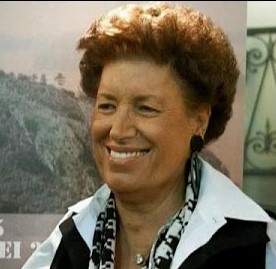Guido Crepax - cartoonist
Erotic character Valentina captured spirit of 1960s Italy
The cartoonist Guido Crepax, whose character Valentina became a heroine of the 1960s generation in Italy and beyond, was born on this day in 1933 in Milan. Valentina first appeared in May 1965 as a secondary character in another cartoon, the photographer girlfriend of an art critic and amateur sleuth. But the sinuous, sensual female depicted by Crepax, her hair cut in a glossy bob, soon acquired fans both male and female. In an era when Italian society was beginning to experience a sense of sexual liberation for the first time, Valentina’s eroticism naturally attracted a legion of male fans. But her assertive individuality struck a chord with many modern Italian women, too, even if her readiness to shed her clothes caused outrage among others. Soon, Valentina left behind her fictional boyfriend and starred in a series of her own adventures, which Crepax continued to produce for three decades. She was outspoken in her left-wing political views, while her uninhibited fantasies increasingly reflected the world of dreams and psychoanalysis that fascinated her creator. Her style even influenced the Milan fashion world. Read more…
_____________________________________________________________
Frances Xavier Cabrini – the first American saint
Missionary who was directed to the US by the Pope
Saint Frances Xavier Cabrini, who founded a religious institute to provide support for impoverished Italian immigrants in the United States, was born on this day in 1850 in Sant’Angelo Lodigiano, in Lombardy. Frances did such good in her life she became the first naturalised citizen of the United States to be canonised in 1946. She had been born into a family of cherry tree farmers, the youngest of 13 children. She was two months premature and remained in delicate health all her life. After her parents died she applied for admission to the Daughters of the Sacred Heart but was told she was too frail for the life. She became the headmistress of an orphanage in Codogno, about 30km (19 miles) from her hometown, where she drew in other women to live a religious life with her. She took religious vows in 1877, adding Xavier to her name to honour Francis Xavier, the patron saint of missionary service. Along with some of the other women who had taken religious vows, she founded the Missionary Sisters of the Sacred Heart of Jesus. Frances went to seek Pope Leo X’s approval to establish missions in China but he suggested she went to the United States instead, to help the many Italian immigrants who were living in poverty. Read more…
____________________________________________________________
Fire damages St Paul Outside-the-Walls
Beautiful Basilica was faithfully rebuilt and restored
A blaze nearly destroyed the ancient Papal Basilica of Saint Paul Outside-the-Walls (Basilica Papale San Paolo Fuori Le Mura) in Rome on this day in 1823. A workman repairing the lead in the church roof accidentally started a fire that burnt down the Basilica, which dated back to the third century and was unique in Rome, having retained its primitive style. St Paul Outside-the-Walls is one of four major Papal Basilicas in Rome, along with St John in the Lateran (San Giovanni in Laterano), St Peter’s (San Pietro in Vaticano) and St Mary Major (Santa Maria Maggiore). After the fire, Pope Leo XII appealed for donations to help rebuild the church in exactly the same style. The Basilica was reopened in 1840 and reconsecrated in 1855 in the presence of Pope Pius IX. The redecoration was helped by contributions from all over the world, including pillars of alabaster from Egypt and malachite and lapis lazuli from Russia. The Italian Government funded the work on the façade and declared the Church a national monument. The Basilica had been founded by the Roman Emperor Constantine over the burial place of St Paul. Read more…

























